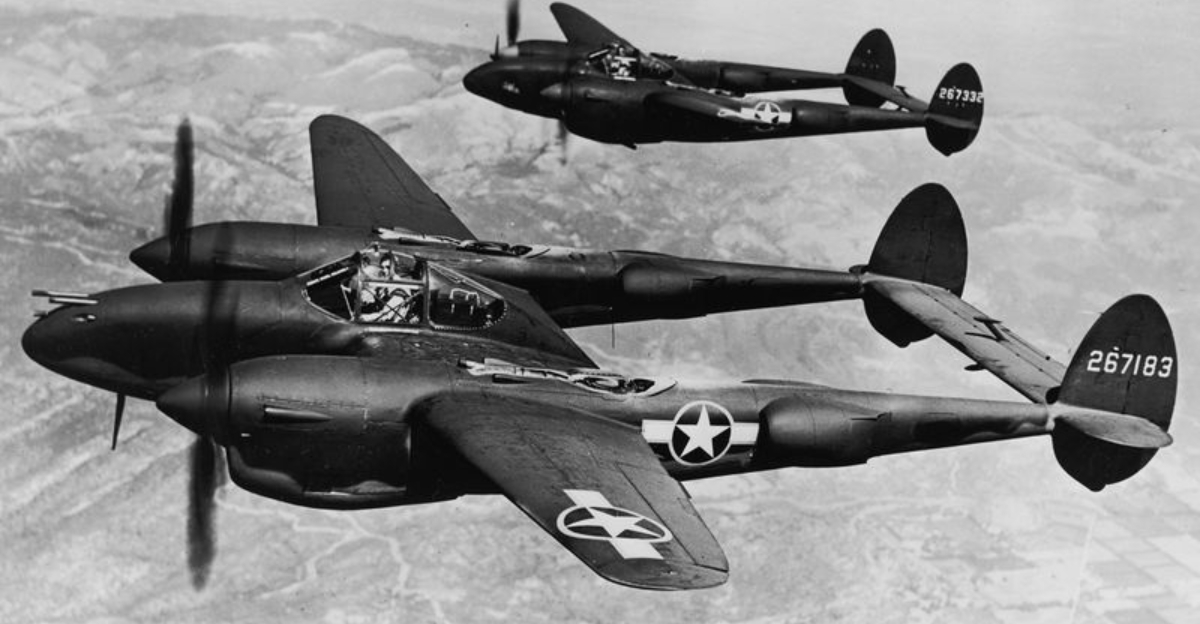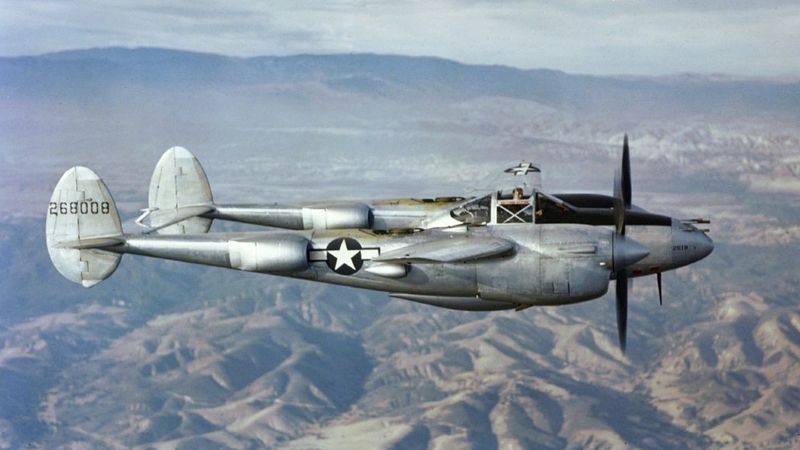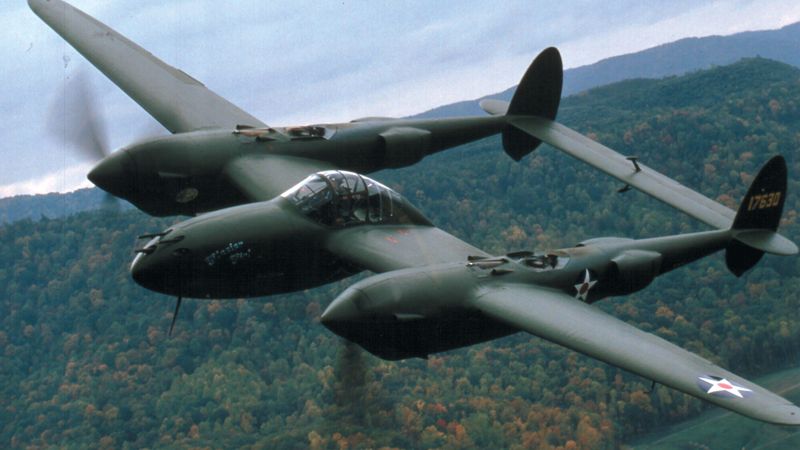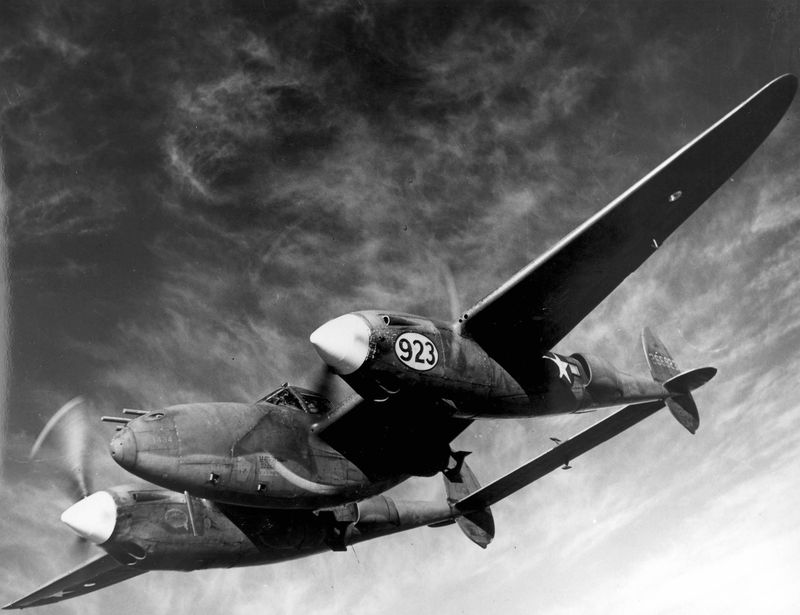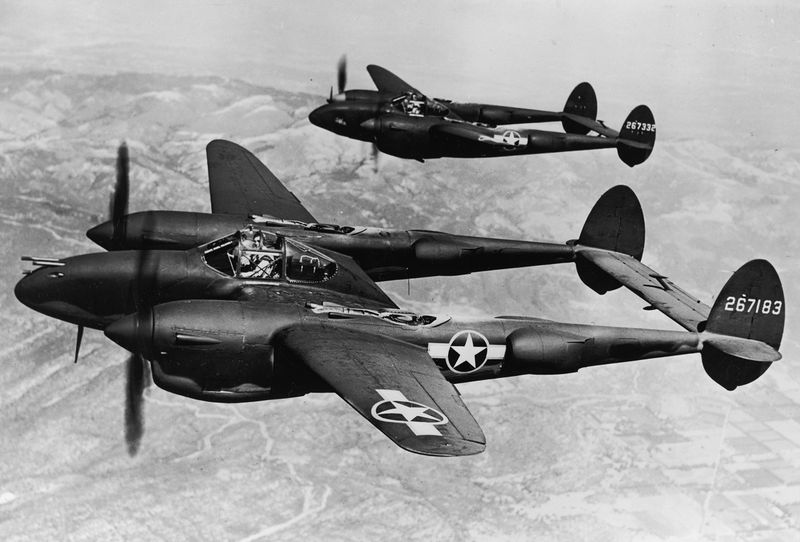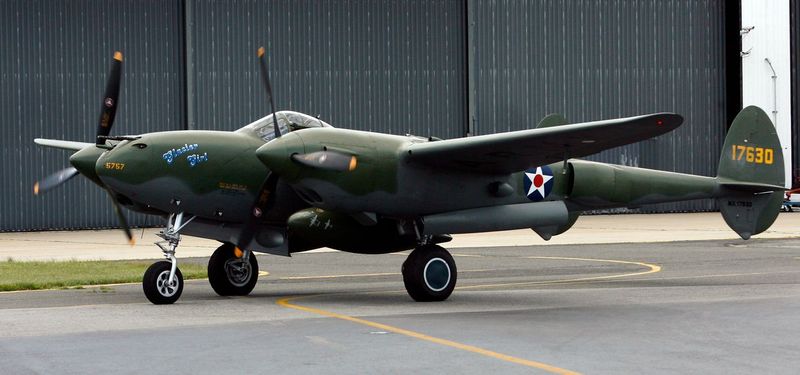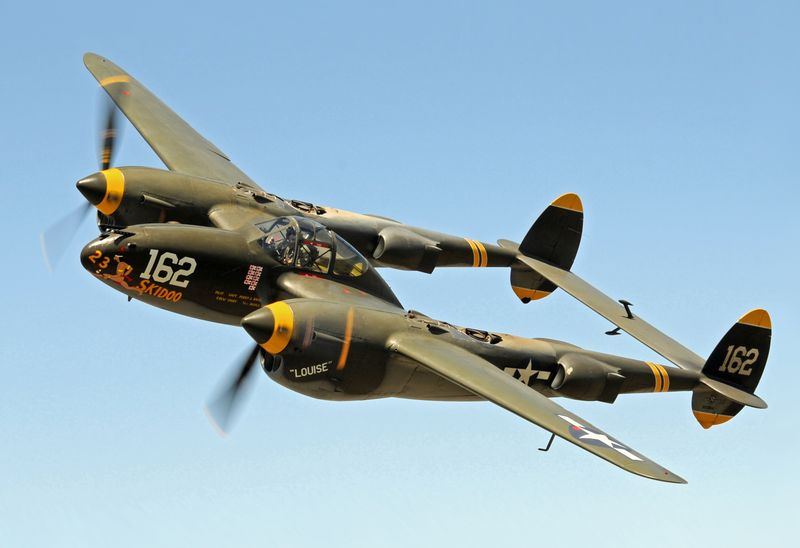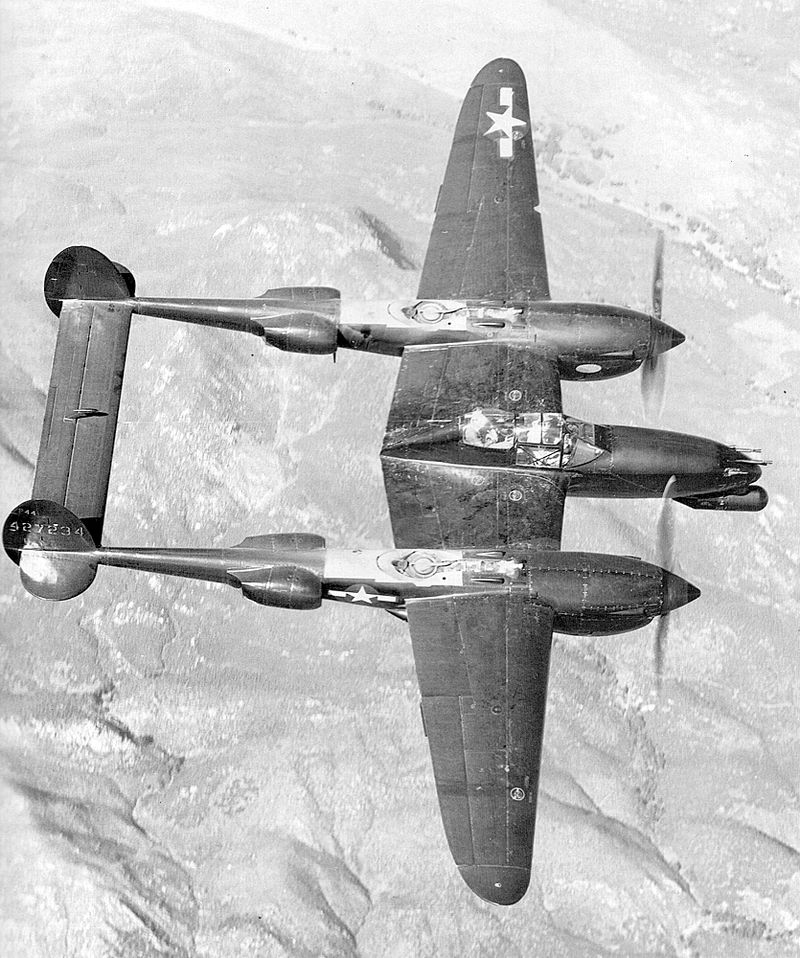The P-38 Lightning was one of World War II’s most distinctive fighter planes, with its twin booms and central cockpit giving it the nickname ‘fork-tailed devil.’
Pilots who flew this remarkable aircraft experienced things that modern aviators could hardly imagine.
Their firsthand accounts reveal what it was truly like to command this powerful, challenging, and sometimes deadly warbird over the skies of Europe and the Pacific.
1. You Were the Fastest Thing in the Sky
“Riding lightning” is how Captain James Marshall described his first P-38 flight in 1943. The twin Allison engines hurled pilots forward with acceleration that pressed them deep into their seats.
With top speeds exceeding 400 mph, Lightning pilots often found themselves outrunning enemy fighters that couldn’t match their velocity. This speed advantage saved countless lives when missions went south.
“You felt invincible at full throttle,” recalled one pilot. “Nothing could catch you if you needed to get home.”
2. Twin Engines Meant Twin Trouble—and Power
Lieutenant Roger Freeman survived when German flak tore through his starboard engine over France. The Lightning’s dual-engine design kept him airborne while single-engine fighters would have dropped from the sky.
Managing asymmetric thrust was an art form that separated living pilots from the dead. The torque differential could flip an aircraft in seconds if handled incorrectly.
“You had to dance on those rudder pedals,” Freeman noted in his memoirs. “One engine out made the P-38 want to roll and yaw simultaneously.”
3. You Had the Firepower of a Small Artillery Unit
Major Thomas McGuire, America’s second-highest scoring ace, praised the P-38’s concentrated firepower. “When those guns lit up, they tore planes apart,” he wrote in 1944.
Unlike wing-mounted weapons that converged at a specific distance, the Lightning’s nose-mounted arsenal—four .50-caliber machine guns and a 20mm cannon—created a deadly cone of fire. Pilots could accurately hit targets at various ranges without adjusting aim.
A two-second burst delivered approximately 100 pounds of ammunition downrange—enough to shred any enemy aircraft.
4. It Could Climb Like a Rocket
Colonel Charles MacDonald once escaped four Japanese Zeros by pointing his P-38’s nose skyward and leaving his pursuers far below. The Lightning’s climb rate astonished even veteran pilots.
At high altitudes where other fighters gasped for air, the P-38 continued ascending at over 3,000 feet per minute. This vertical performance created tactical advantages that saved countless Allied pilots.
“You’d pull back on the stick, and that bird would just keep climbing until the air got too thin to breathe,” MacDonald later told war correspondents.
5. Compressibility Was a Killer
First Lieutenant Mark Stevens never pulled out of his dive over Germany in February 1944. His wingmen watched helplessly as his P-38 plummeted, controls frozen in the phenomenon pilots feared most: compressibility.
Above 500 mph in a dive, shock waves formed around control surfaces, making them immovable. The aircraft became essentially a ballistic projectile.
Surviving pilots developed a healthy respect for physics. “You’d count three seconds in a dive, then pull back—no matter what,” explained Captain Harold Johnson. “Wait longer, and your next stop was eternity.”
6. The Cockpit Was Cramped and Cold at High Altitude
Frost formed on Lieutenant David Anderson’s oxygen mask as he patrolled at 30,000 feet over the English Channel. The temperature outside hovered around -50°F, and the cockpit heater barely made a difference.
“Your feet went numb first, then your hands—even through lined gloves,” Anderson wrote in his diary. The tight cockpit offered little room to move and restore circulation.
Pilots learned to wiggle their toes constantly and keep their hands moving on controls. Many returned from missions with frostbite despite these precautions.
7. It Was a “Pilot’s Plane”—Demanding but Rewarding
“She’ll kill you if you’re careless, but dance with you if you’re skilled,” wrote Captain Richard Bong, America’s top ace with 40 victories. The P-38 required constant attention—trim adjustments, engine synchronization, and vigilant airspeed monitoring.
Pilots who mastered these demands found an aircraft that responded with exceptional precision. Small control inputs produced immediate, predictable responses that could be life-saving in combat.
Experienced Lightning pilots developed an almost symbiotic relationship with their machines. “You didn’t fly a P-38,” one pilot remarked. “You wore it.”
8. Enemy Pilots Feared It, Especially in the Pacific
A captured Japanese pilot confessed during interrogation: “When we see those twin tails in the sky, many of us simply turn away.” The P-38’s psychological impact was as powerful as its bullets.
German pilots called it “der Gabelschwanz Teufel”—the fork-tailed devil. The distinctive silhouette warned enemies that America’s deadliest fighter aces were hunting them.
In the Pacific theater especially, where range was crucial, the Lightning dominated. Japanese pilots learned to fear the twin-boomed American fighter that could venture farther from base than any other Allied aircraft.
